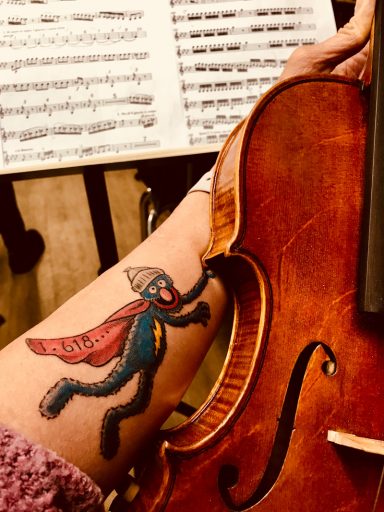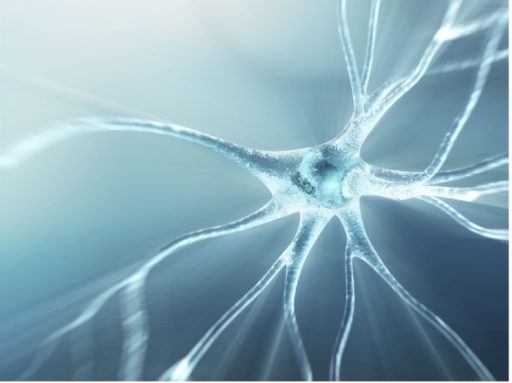
Hitting the Right Notes: How Manual Therapy Can Keep Musicians in Tune.
As a musician, your body is as much of an instrument as your guitar, violin, or piano. The hours spent perfecting your craft are invaluable, but they also come with a price—aches, pains, and in some cases, injuries that can make you feel more like a creaky old door than a star. Fear not, because manual therapy might just be the key to keeping you playing without pain, injury, or that unsettling click in your shoulder that only gets louder during a performance.
The Invisible Pain: Repetitive Strain Injuries (RSI) and Their Prevalence.
Repetitive Strain Injuries (RSIs) are the backstage villains of the music world, lurking in the shadows and waiting to strike. According to research, between 50% to 76% of professional musicians experience RSIs at some point in their careers . This can manifest as shoulder pain, hand pain, neck pain, or even the slow degeneration of joints, especially in the hands. Pianists, guitarists, and string players are particularly susceptible due to the repetitive and intricate nature of their playing.
RSIs are the cumulative effect of small injuries and strains that occur over time. They are the kind of thing that starts as a minor annoyance, and left without treatment, can escalate into a full-blown issue if not addressed. Imagine trying to nail that impossible solo with a shoulder that refuses to cooperate. It’s not a pretty picture. RSI is the result of the body reacting to micro-tears in connective tissue. Over time, the laying in of fibrin and inflammatory cells leads to pain receptors in the tissues. In musicians, this is often not felt with playing a primary instrument, as the tissue is set to work in a precise range of motion. When a musician is tasked with other chores such as sports, exercise or mowing a lawn, the tissue that has shortened, become less elastic and less flexible tears instead of adapting like normal tissue. This is where elbow, hand and neck issues can start, then be exasperated by playing an instrument.
Why Manual Therapy Works: Putting the “Ahhh” Back in Practice
Manual therapy, which includes techniques like massage therapy, joint mobilization, and myofascial release, is a hands-on approach that targets the very muscles and tissues that take the brunt of your musical ambition. But how exactly does it help?
1. Relieves Muscle Tension: The repetitive nature of playing can cause muscles to tighten up, leading to pain and restricted movement. Manual therapy can help work to improve nerve conduction, which may help muscle tension. Working on the interfaces between structures helps reduce inflammatory processes caused by repetitive use and aids in reducing discomfort.
2. Enhances Blood Flow: Improved circulation helps in delivering oxygen and nutrients to the muscles, which can speed up recovery from those long practice sessions or performances.
3. Improves Joint Mobility: If you’ve ever felt like your fingers were rusted hinges, manual therapy can help. Techniques like joint mobilization can restore the range of motion in your joints, especially in your hands and shoulders. Much of this can be taught during a session so you can learn how to mobilize your own joints while gigging. Sounds intimidating, but learning about your joints and their movement can help you understand the mechanisms of pain.
4. Reduces Pain and Inflammation: By working on the muscles and soft tissues, manual therapy can decrease pain and inflammation, making it easier to keep playing without utilizing advil or tylenol which can cause harm to the liver and stomach. Movement is good, stasis is bad!
5. Helps Surfaces Glide and Increases Hyaluronic Acid: Hyaluronic acid (HA) helps our tissues glide. Data published by the Stecco group support the hypothesis that manual therapy that uses deep friction could metabolize self-aggregated HA chains responsible for increasing loose connective tissue viscosity, catalyzing a local HA fragment cascade that will generate soreness but, at the same time, facilitate the reconstitution of the physiological loose connective tissue properties. The soreness you feel after a massage may be useful to helping build back loose connective tissue, and may also reduce nociceptive properties (pain!).
The Research Backs It Up: Why This Isn’t Just a Feel-Good Fix
Studies have shown that manual therapy can be particularly effective for musicians. For instance, a study published in the “Journal of Bodywork and Movement Therapies” found that manual therapy significantly reduced pain and improved function in musicians suffering from RSIs . Another study in the *Journal of Occupational Medicine and Toxicology* emphasized the importance of early intervention with manual therapy to prevent long-term injuries and improve overall performance .
Frontiers of Pain: The relationship between musicianship and pain.
Pro Tips for Musicians: How to Stay Injury-Free
Beyond regular manual therapy sessions, here are some practical tips to keep your body in harmony with your music:
Warm-Up Like an Athlete: Before diving into practice, spend a few minutes stretching your fingers, wrists, and shoulders. Simple rotation and priming your ligaments to glide and have fluid brings new cells to your tissue, allowing inflammation to be cleaned up. This can help prepare your muscles and joints for the repetitive motions ahead. If you require stretches, I have started publishing on my Utube channel that can be found on this website under contact.
Take Breaks: It’s easy to lose track of time when you’re in the zone, but taking short breaks can prevent strain. Use these breaks to stretch or shake out any tension. Set an alarm while practicing to remind you to move out of your instrument posture.
Watch Your Posture: Slouching over your instrument is a fast track to neck and shoulder pain. Maintain good posture, keeping your back aligned and shoulders relaxed. Most instruments do not have natural alignment. Your body will be set up to work in your normal instrument posture. It is when we are NOT playing that our bodies tend to get injured. Your tissue is set at the tension to play your instrument. After long hours of being in that posture, rapidly changing this posture can cause microtears in the tissue (like hockey, or mowing the lawn). When you change tasks, be aware of how you are moving your body into a new task.
Listen to Your Body: Pain is your body’s way of telling you something isn’t right. Don’t ignore it. If something hurts, take a break and seek professional help if necessary. But also, don’t panic. This is not the end of your career. Pain always has a reason, and finding the peripheral generator of your discomfort can help give you some maintenance and prevention strategies.
Final Note: Keep the Music Playing
As a musician, your body is your greatest asset—second only to your passion for music. Don’t let pain and injuries steal the show. By incorporating manual therapy into your routine, you can keep performing at your best, hitting all the right notes, and maybe even adding a few more encore-worthy moments to your repertoire. So go ahead, give manual therapy a try. Your body will thank you.
Ready to fine-tune your body for the stage? Book an Appointment I have specialized in the mechanisms of pain and musicians for over 30 years. I love helping musicians like you stay in peak playing condition. Because nothing should come between you and your music, especially not resolvable pain!
Other articles you may like...
Breast Health and Post-Mastectomy Care: The Role of Massage Therapy in Healing and Recovery
Breast health is a crucial aspect of overall well-being, particularly for those undergoing or recovering from breast cancer treatments such as mastectomy and radiotherapy. These medical interventions, while lifesaving, often result in physical and emotional challenges, including scar tissue formation, restricted movement, pain, and lymphedema. Integrative approaches, including massage therapy, can play a vital role…
Board Member BCICA
Read More
Introducing Gender-Affirming Post-Surgical Massage: A Safe, Supportive Path to Healing
Finding an understanding and experienced practitioner can be difficult. I understand that gender-affirming surgery is a deeply personal and transformative journey. However, the recovery process can present physical challenges such as pain, swelling, scar tissue formation, and changes in mobility. As a massage therapist specializing in post-surgical care, I offer gender-affirming post-surgical massage to support…
A WORKOUT FOR MUSICIANS IN PAIN
As a therapist working with musicians for over 30 years—and a musician myself—I created a workout plan for a patient struggling with playing-related pain. It quickly became clear: this routine could help many more. Focused on neural tension, compression, and overuse injuries like tendonitis, the exercises are designed to support the unique physical demands of…
Palpating Fibrosis and Easing Inflammation with Geoffrey Bove and Holly McMillan
Dr. Bove and I have been working on fibrosis and pain mechanisms for decades. His new work with Holly looks at post-radiation fibrosis, which ironically is what led us to working together. This podcast with Whitney Lowe is a fantastic listen for therapists trying to describe what they do with their hands. Check out their…
Visceral Massage and the Language of Pain
“Visceral Massage and the Language of Pain,” explores the relationship between pain science and manual therapy, focusing on somatic and visceral pain, mechanical stimulation, manual therapy’s role in healing, and the impact of visceral mobilization on postoperative adhesions, with the goal of enhancing evidence-informed manual therapy in clinical practice.



